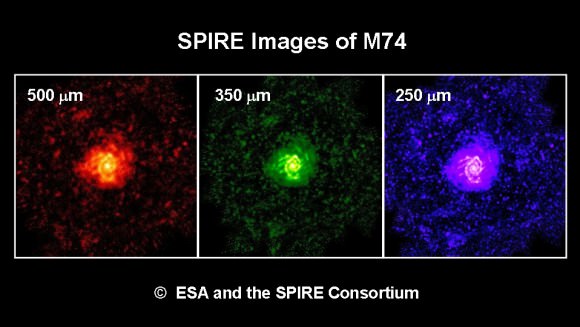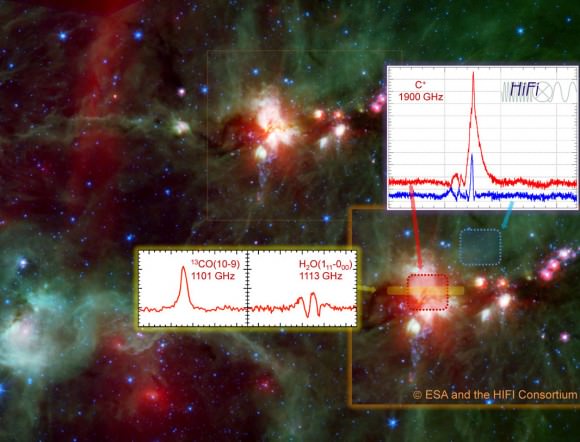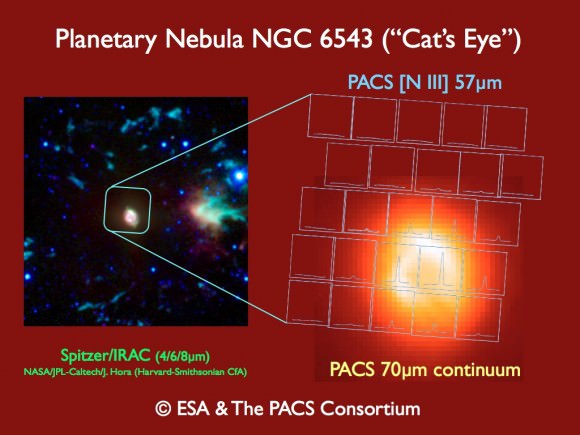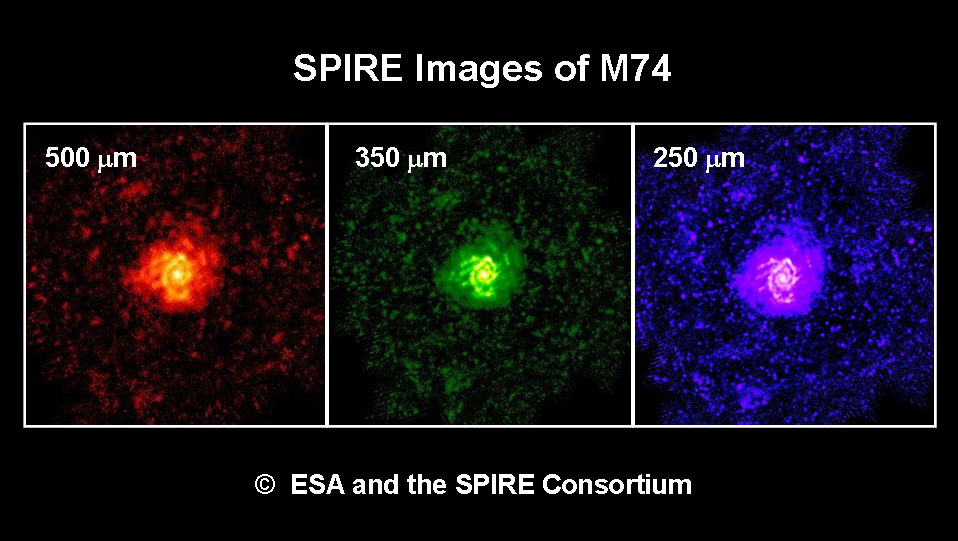[/caption]
The Herschel telescope has now turned on all its instruments, taking a few “first light” images with each instrument of galaxies, star-forming regions and dying stars. Herschel astronomers said they were “staggered” by the results, saying “these observations show that Herschel’s instruments are working beyond expectations. They promise a mission of rich discoveries for waiting astronomers.” Above are images taken with Herschel’s Spectral and Photometric Imaging Receiver (SPIRE, of two galaxies, M66 and M74. The galaxies showed up prominently, providing astronomers with their best images yet at these wavelengths. And what’s that in the background? Other more distant galaxies!

Here are three images of M74 taken in three different wavelengths, and of special note is the image taken at 250 microns. This is longer than any previous infrared space observatory. Herschel’s primary mirror is 3.5 m in diameter, nearly four times larger than any previous infrared space telescope. So, expect more dazzling imagery and science to come.
Water in Cygnus

Scientists used Herschel’s Heterodyne Instrument for the Far-Infrared (HIFI) to look for warm molecular gas heated by newborn massive stars in the DR21 star-forming region in Cygnus. They were able to observe ionized carbon, carbon monoxide, and water in this region.
HIFI provided excellent data in two different observing modes, returning information on the composition of the region with unprecedented accuracy and resolution. It works by ‘zooming in’ on specific wavelengths, revealing different spectral ‘lines’ that represent the fingerprints of atoms and molecules and even the physical conditions of the object observed. This makes it a powerful tool to study the role of gas and dust in the formation of stars and planets and the evolution of galaxies.
PACS stares into the Cat’s Eye

The first observation with the Photodetector Array Camera and Spectrometer (PACS) instrument shows the Cat’s Eye Nebula; a complex shell of gas thrown off by a dying star. Dying stars create spectacular nebulae, enriching the interstellar medium with heavy chemical elements. But how does an initially spherical star produce such a complex nebula? Further observations with PACS should help answer questions like that. This instrument makes it possible, for the first time, to take images in spectral lines and see how the wind from the star shapes the nebula in three dimensions.
PACS observed the nebula in two spectral lines from ionized nitrogen and oxygen. It also obtained a small map of the Cat’s Eye Nebula in the 70 micron band, revealing the structure of a dust ring with an opening on one side.
The Herschel instruments will now be tested and calibrated, and the official mission should start around the end of November. “These images demonstrate that there is a lot of science to look forward to,” the scientists said.
Sources: ESA, Herschel Twitter

